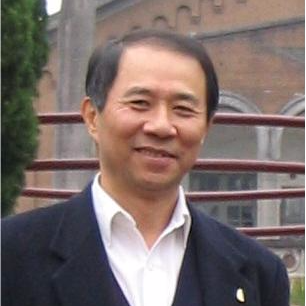Novel Ligands for Organometallic Catalysis
A special issue of Molecules (ISSN 1420-3049). This special issue belongs to the section "Organic Chemistry".
Deadline for manuscript submissions: closed (31 December 2021) | Viewed by 6769
Special Issue Editor
Interests: homogeneous catalysis; organometallic chemistry; ligand design; n-heterocyclic carbene; coordination chemistry; phosphine; dimetallic catalysis; synthetic methodology
Special Issue Information
Dear Colleagues,
The research topic of “Ligand Design for Specific Organometallic Catalysis” is one of the most important fields of catalysis and organometallic chemistry. Despite numerous advances in transition metal-catalyzed reactions, the development of efficient catalytic systems is still highly desirable for industrial application, sustainability, and environmental advantages. It is well-documented that the activity of metal centers of catalysts is greatly influenced by the associated ligands through fine-tuning of their steric and electronic properties. Moreover, ligands are also able to influence the solubility of complexes in various solvents, particularly in aqueous or unconventional media. The use of metal complexes as photoredox catalysts in organic transformation is another recent advance in this field. Different kinds of ligands are designed and tuned to improve the optoelectronic properties of metal complexes, which might show great potential in photocatalysis.
We believe that new catalytic systems as well as novel organic transformation catalyzed by organometallic compounds presented in the submitted papers will be of interest to chemists already involved in this field as well as to the large community of synthetic and catalytic chemists, and that they will substantially affect future organic reactions/catalysis. We are convinced that works published in this Special Issue of Molecules will further contribute to the fundamental knowledge of “Novel Ligands for Organometallic Catalysis”. Therefore, we strongly encourage chemists in the related fields to submit manuscripts for this Special Issue on “Novel Ligands for Organometallic Catalysis” in the journal Molecules.
Prof. Dr. Shiuh-Tzung Liu
Guest Editor
Manuscript Submission Information
Manuscripts should be submitted online at www.mdpi.com by registering and logging in to this website. Once you are registered, click here to go to the submission form. Manuscripts can be submitted until the deadline. All submissions that pass pre-check are peer-reviewed. Accepted papers will be published continuously in the journal (as soon as accepted) and will be listed together on the special issue website. Research articles, review articles as well as short communications are invited. For planned papers, a title and short abstract (about 100 words) can be sent to the Editorial Office for announcement on this website.
Submitted manuscripts should not have been published previously, nor be under consideration for publication elsewhere (except conference proceedings papers). All manuscripts are thoroughly refereed through a single-blind peer-review process. A guide for authors and other relevant information for submission of manuscripts is available on the Instructions for Authors page. Molecules is an international peer-reviewed open access semimonthly journal published by MDPI.
Please visit the Instructions for Authors page before submitting a manuscript. The Article Processing Charge (APC) for publication in this open access journal is 2700 CHF (Swiss Francs). Submitted papers should be well formatted and use good English. Authors may use MDPI's English editing service prior to publication or during author revisions.
Keywords
- ligand design
- organometallics
- homogeneous catalysis
- asymmetric reactions
- coordination chemistry
- photoreactions
- nitrogen donors
- phosphine
- carbon donors
- oxygen donors
- multidentates






